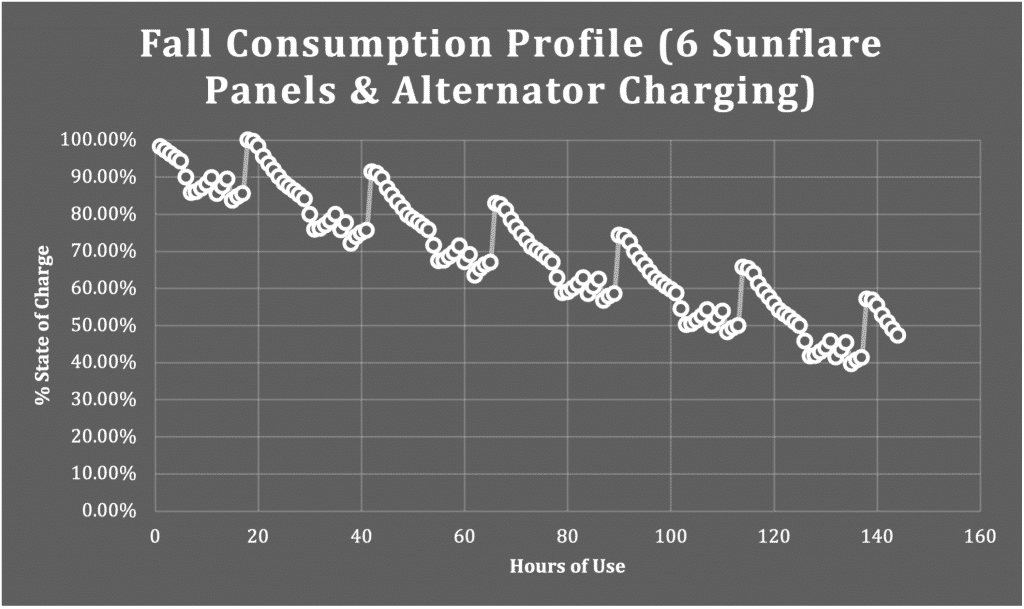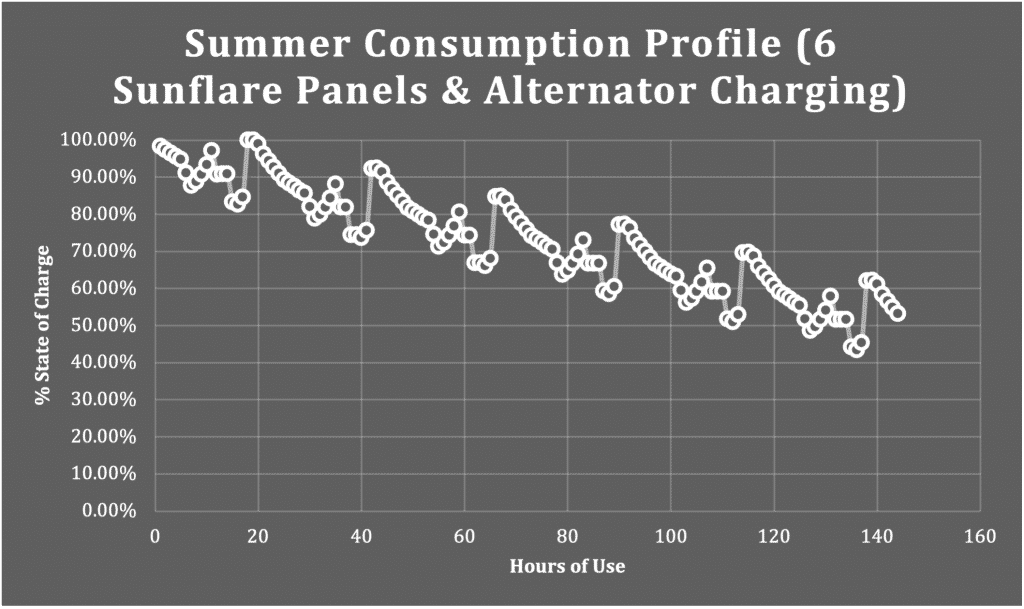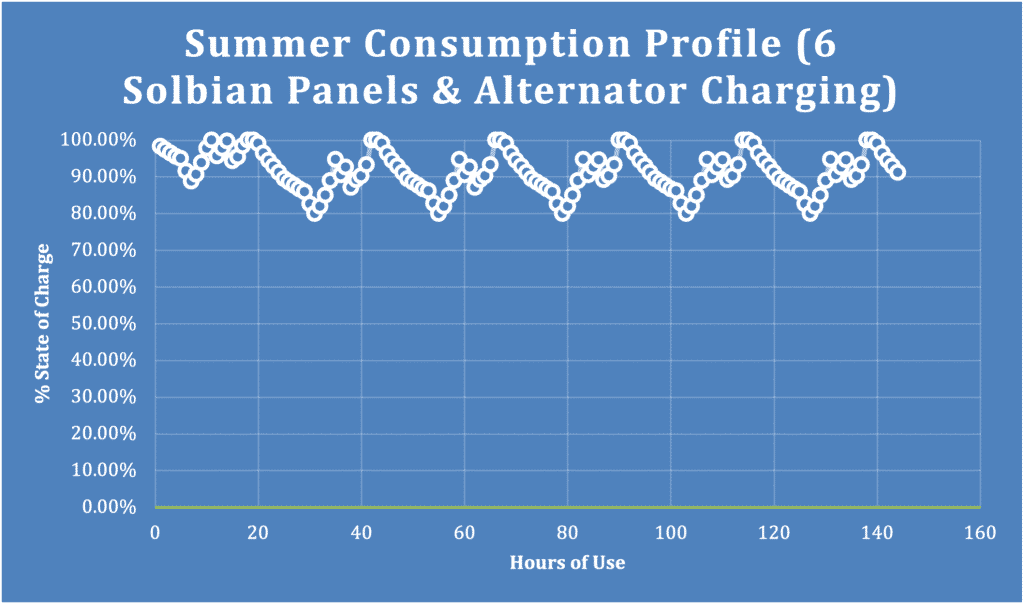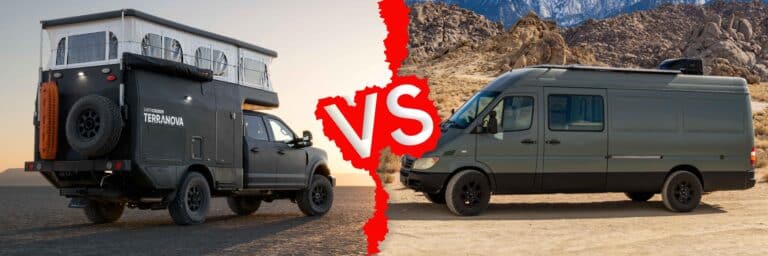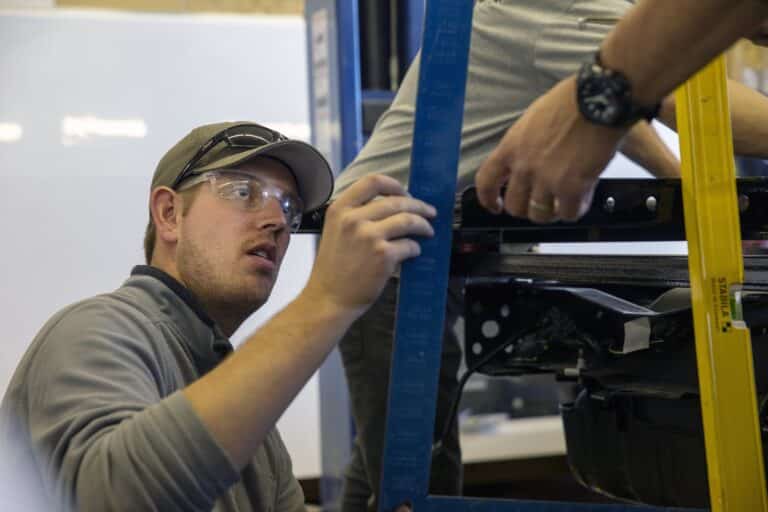Last week we took a look at the EarthCruiser power systems and associated consumption cycles and performance. This week we’re digging into system performance found in our soon-to-be-released EC Terranova (sneak peek interior design shots here).
As relayed in the prior EarthCruiser-focused post, our engineering team is comprised of energy systems experts who specialize in the development and optimization of power systems. These engineers have applied this experience over many iterations to the power systems in our expedition vehicles, ensuring they provide maximum efficiency and longevity.
The EC Terranova expedition vehicle power systems findings differ from EarthCruiser power systems because of differences in the charging system and design.
At a high level, the EC Terranova has additional solar panel capacity (6 panels vs 5 on EXP/FX) due to the increased length of the roof. Also, the domestic chassis (Ford in this calculation) has a larger alternator than the Fuso/Isuzu platform and does not require a secondary alternator to be installed for the alternator charging system. This all adds up to specialized efficiency and performance for EC Terranova owners.
There is a large amount of technical detail that goes into our system optimization utilizing solar, lithium batteries and other power systems. Our team has used this data to create a power consumption overview, which provides a tactical look at the everyday use of the EC Terranova power system.
Standard Assumptions:
This profile was designed to simulate “heavy use.” All appliances and components are used based on a daily schedule, without regard for current power levels. While not necessarily a worst-case scenario, there are many opportunities to use components more efficiently to conserve power and extend charge cycle times. If the owner plans to monitor the State of Charge (SOC), and adjust usage patterns to maximize performance, a measurable improvement in each of the below profiles should be expected.
Standard Assumptions (Fall/Winter):
- Cooktop used for breakfast, lunch and dinner. Total of 30 minutes per day on high setting
- Interior lights on for 3 hours in the morning, 5 hours at night
- Refrigerator running 24 hours per day
- Water heater on for 30 minutes 3x per day
- Air top running full time, cycle on/off to maintain temperature
- Outside flood lights used 3 hours per night
- Water pump used throughout day
- 1 hour of Air compressor use every 2 days*
- Roof full up and full down 1x per day
- No Air conditioner use
- Spare fridge (if installed) running 24 hours per day
- Engine running 1 hr/day to charge batteries with alternator power system (6pm)*
- 2 phones charging overnight
- 1 laptop computer charging overnight
- Solar panel performance
- Panels are not shaded
- Panels are clean, in good condition, and free of snow/debris
- Clear skies
Standard Assumptions (Spring/Summer):
- Cooktop used for breakfast, lunch and dinner. Total of 30 minutes per day on high setting
- Interior lights on for 3 hours in the morning, 3 hours at night
- Refrigerator running 24 hours per day
- Water heater on for 30 minutes 3x per day
- Air top running in early morning
- Outside flood lights used 1 hour per night
- Water pump used throughout day
- 1 hour of Air compressor use every 2 days*
- Roof full up and full down 1x per day
- Air conditioner (if installed) running for 5 hours in afternoon
- Spare fridge (if installed) running 24 hours per day
- Engine running 1 hr/day to charge batteries with alternator power system (6pm)*
- 2 phones charging overnight
- 1 laptop computer charging overnight
- Solar panel performance
- Panels are not shaded
- Panels are clean, in good condition, and free of snow/debris
- Clear skies
Report Specific Assumptions:
- Air Conditioner – Installed and operated as indicated above
- Spare fridge – Installed and operated as indicated above
- Plan to use vehicle through all 4 seasons
- Normal access to shore power: No
- Baseline (standard) solar panel selection: (x3) Sunflare 108W panels
- Baseline (standard) battery selection: (x1) 400Ah lithium battery
*The alternator charging and on-board air systems are still in development. Power consumption figures have been estimated for this analysis.
Results
The below profiles show power system performance based on the parameters outlined above
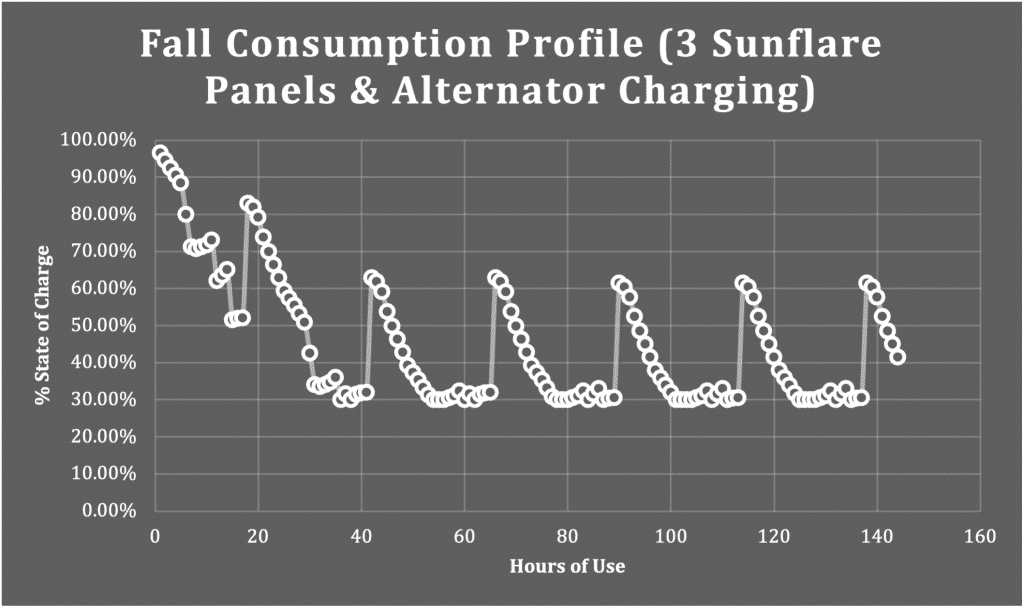
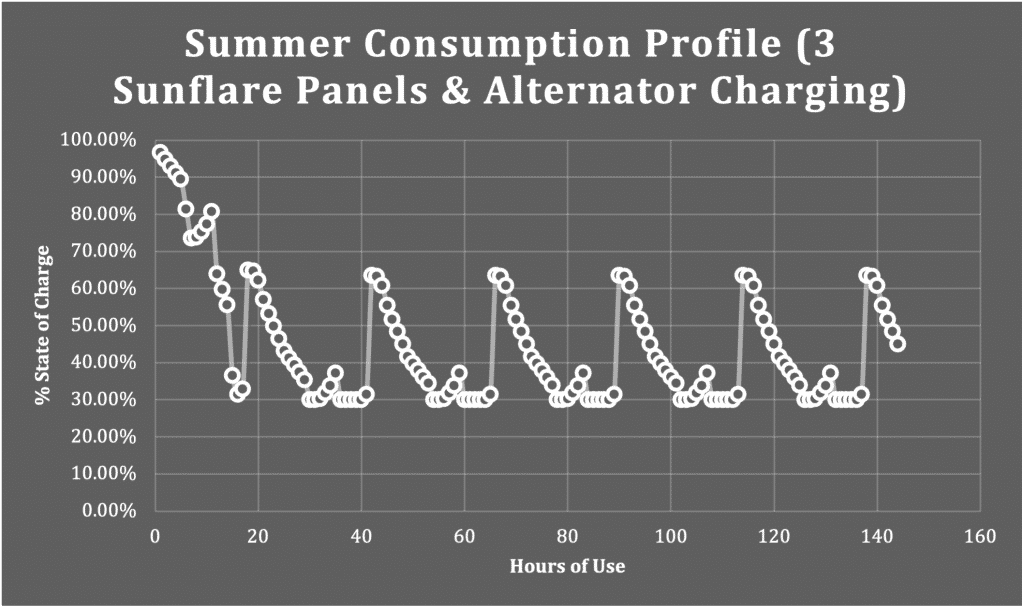
Alternative Performance Results
The below profiles show power system performance with (x6) Solbian panels installed (upgrade) and (x1) 400Ah lithium battery (standard)


Alternative Performance Results
The below profiles show power system performance with 800Ah of battery capacity (two batteries rather than one), with examples of both (x6) Solbian panels and (x6) Sunflare panles (both the second battery and additional panels are upgrade options)
